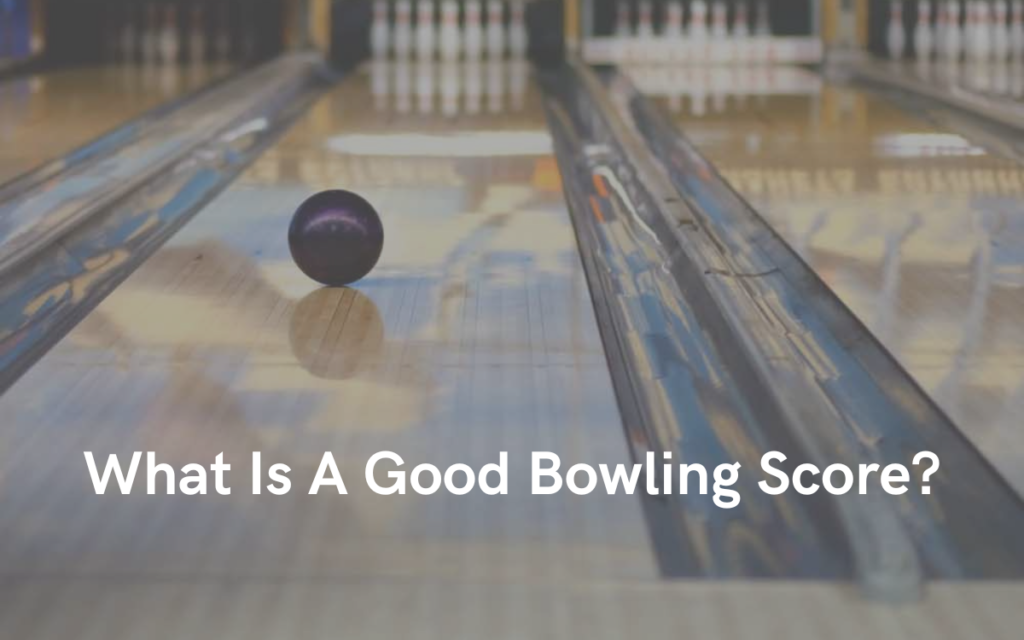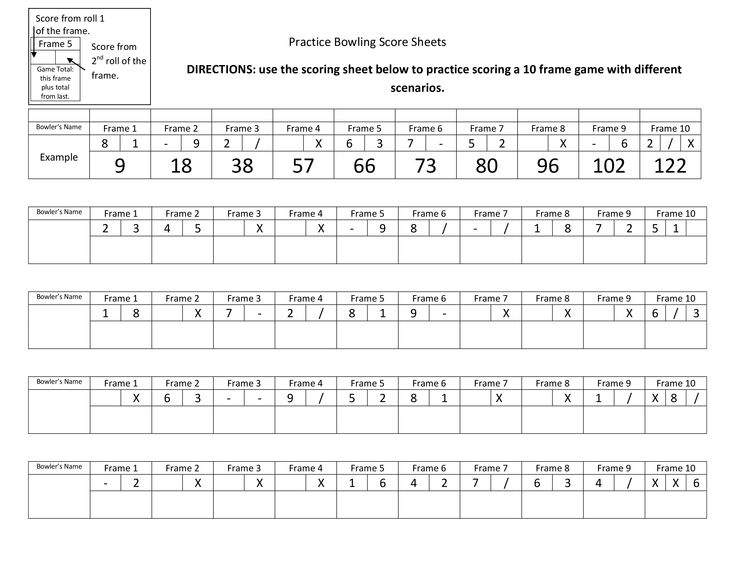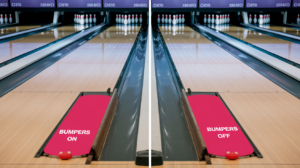What Is A Good Bowling Score? – Scoreboard Secrets In 2025

In bowling, a good score can vary significantly depending on the bowler’s skill level and the type of bowling they are playing (i.e., ten-pin bowling, nine-pin bowling, etc.). In the case of ten-pin bowling, the most common form of bowling, a good score is considered above average for recreational bowlers in terms of skill level.
A good bowling score is estimated to average around 130-150 points per game when playing casual or recreational bowling. As a result, for a bowler in that group, a good score is 160-200 points or even higher.
What Is The Average Score In Bowling For A Man?
There is a wide range of bowling scores for men. Most men score between 160 and 190 points per game when playing casually with friends. The range is ideal for a relaxed bowling session.
The situation can get even more intense if you decide to participate in a league or tournament. Many players in these settings can score well over 200 points per game. At this point, the competition begins, and everyone is on their game.
There are high stakes and even higher pressures. To succeed, players must give their all and remain focused. Significant rewards can be associated with winning, but the risks are also significant.

Average Bowling Score by Age for Kids Under 10
The average score of a child under the age of 10 when they play bowling is usually between 20 to 70 points. A child may feel a bit sad if their score is low if their performance is not up to expectations. In order to make the game more exciting for them, we can use bumpers, use very light balls, and always cheer them on to make the game more exciting!
No matter how many pins they knock down, it doesn’t matter how many they knock down. There is nothing more important than the fact that they enjoy playing the game. It would be great to see them laughing and feeling happy after they throw the ball if they are doing a good job! We want them to enjoy bowling, and that’s more important than trying to achieve a high score.
So, no matter how the score turns out, let’s enjoy the moment and celebrate their smiles and excitement, no matter how the game turns out.

Average Bowling Score for Pre-Teens 10 to 12
In general, kids between the ages of 10 and 12 are able to bowl between 70 and 120 points. Usually, kids’ scores will be low because they are still learning the proper technique and strength to bowl.
It might be rare to get strikes at this age, and spares might also be hard to come by. However, that’s fine with me! Practice makes perfect, so kids should score spares more consistently. It can be beneficial for them to focus their efforts on getting the remaining pins, even if they don’t knock down all of the pins.
Kids start to care more about bowling scores at this age. By teaching their children the right techniques and developing good habits, parents can play a big role. You should choose a bowling ball that’s not too heavy, wear the right shoes, and understand how the lanes work.
Kids’ scores will improve with regular practice and effort. Developing solid bowling skills begins with encouragement, patience, and a strong foundation.

Average Bowling Score for Teens 13 to 19 Years Old
Teen agers 13 to 19 who regularly practise bowling can expect to achieve an average score of 120 to 190. Many kids who have grown fond of the game at this age tend to totally embrace it.
Most teenagers can develop better control of the game due to their increasing commitment to the sport and physical improvement. They should have sorted out their arm swing and ball weight by now. This stage represents a transition to more technical aspects of bowling, such as improving the swing form, applying the proper force, and adding spin to the ball.
Joining a local bowling league when you’re a teenager is quite advantageous. In a league, a bowler develops their own style and approach to the game. Leagues are also fantastic learning environments, allowing teens to improve their scores and learn how to make strategic adjustments during games. It’s an excellent opportunity for them to hone their skills, improve their entire game, and thoroughly appreciate the competitive and social sides of bowling.

Average Bowling Score for Adults 20 to 30 Years Old
Bowling scores range from 170 to 220 for people aged 20 to 30. They are completely matured at this age, and their bodies are ready for sophisticated bowling moves.
As a result, students can learn fascinating techniques like making the ball spin, putting the ball in just the perfect location, and regulating their body movements. These bowlers can now choose whether they want to bowl for leisure, join a bowling league, or even become professionals.
If someone in this age bracket consistently scores above 200, they should consider making bowling more than just a hobby – perhaps even a profession! But don’t be concerned if you’re not yet hitting those marks.

Average Bowling Score for Adults 31 to 50 Years Old
If a person is between the ages of 31 and 50 and has bowled frequently, their average score is usually between 200 and 250. They’ve probably gotten extremely excellent at bowling by now and are seeking for ways to improve.
To assist them handle and release the bowling ball better, several bowlers in this age bracket wear a customised glove and wrist brace. Others use talcum powder on their hands or shoes that grip the floor. It’s all about figuring out what works best for each individual.
Because they’ve worked so hard to achieve such high scores, some people in this age group may consider making bowling more than just a hobby – possibly even a profession! Many of them join bowling leagues where they may show off their talents and compete for prizes. If someone in this category achieves less than 100, it is regarded poor when compared to their regular performance.

Average Bowling Score for Adults 50+ Years Old
Our bodies may become less agile as we age, particularly around the age of 50. As a result, a bowler in their fifties may have an average score of 120 to 150 if they’re just having fun.
But here’s the cool part: if they continue to practise on a regular basis, even someone a little older can retain a solid average score of 200. It’s normal for folks in this age bracket to be unconcerned about their bowling scores. It’s all about having fun with the game, especially if high scores feel a little difficult. The key is to have fun and stay active regardless of the scoreboard!

What Is A Good Bowling Score For Amateur?
An amateur bowler’s score can depend on several factors, including skill level, experience, and game type (e.g., ten-pin bowling). In general, however:
Average Bowler:
It is not uncommon for an amateur bowler to score between 70 to 100 points. Generally, a average bowling score in this range indicates basic proficiency, with occasional strikes and spares.
Intermediate Bowler:
An intermediate bowler should aim for 100 to 150 to achieve a high score. The range is consistent with a better understanding of technique, a consistent conversion of spares, and occasional strikes.
Advanced Bowler:
Some individuals consistently score above 150 as a result of their advanced skills. It indicates a high proficiency level to achieve scores in the 150 to 200 range, indicating a greater frequency of strikes and the ability to convert spares.
Expert Bowler:
A score of 200 or higher is often considered excellent by amateur bowlers. A skillful bowler has a comprehensive understanding of the game, can consistently strike the ball, and is adept at picking up spares.
Scores may be subjective, and different leagues and tournaments may have varying expectations. The most critical aspects of bowling are improvement and enjoyment, and bowlers should set personal goals according to their skill levels and aspirations.

What Is A Good Bowling Score For A Woman?
If we talk about a good bowling score for women, then the score depends upon the skill level of the women. According to experience level of women following are some good scores for them:
| Skill level | Score |
| Beginner level | 100-130 points |
| Intermediate or Casual League Bowler | 150-190 points |
| Professional woman bowler | 210+ points |
🚫What Is Considered A Bad Bowling Score?
A bowling score is to be considered as a bad bowling score when points are less than 90. If the score is less than 50 then it is considered the worst score. These bad scores are achievable by those people who haven’t any experience of bowling.
How Do You Calculate Bowling Average?
To calculate your bowling average, you can use an easy formula. A step-by-step guide is provided below:
Determine the Total Number of Pins Knocked Down:
Record the number of pins knocked down for each game bowled during a league session. The sum of all the pins represents each frame.
Calculate the Total Pinfall:
Count the number of pins knocked down in all games played over a specified period (such as a league season).
Determine the Total Number of Games Bowled:
The number of games bowled during the specified period should be counted. An entire league season or a specific period may be covered.
Calculate the Bowling Average:
Subtract the total pinfall from the total number of games bowled.
Bowling Average = Total PinfallTotal Number of Games BowledBowling Average=Total Number of Games BowledTotal Pinfall
The result is a numerical value that represents the average number of pins knocked down per game.
Example:
Assume a bowler has a total pinfall of 2,500 pins over ten games. This would be the bowling average:
Average of bowling = 2,500/10 = 250Average of bowling = 102,500 = 250
As a result, the bowling average, in this case, is 250.
Important Points:
- A higher bowling average indicates you are more consistent and skilled at knocking down pins.
- A bowler’s average is recalculated regularly, usually on a weekly basis for league bowlers.
- The average calculation is completed once a bowler returns after missing a session or a week.
This is a general formula for calculating a bowling average, and there may be variations in particular leagues or competitions. The calculation may be adjusted slightly by some leagues.
Summary
In summary, a good bowling score depends on factors like skill level and the type of play. For casual bowlers, 160-200 points are considered good, while men in friendly games often score between 160 and 190. Competitive settings can see scores well over 200, with increased pressure and stakes. Amateurs target scores like 70-100 for average, 100-150 for intermediate, and 200+ for expert bowlers. Calculating the bowling average involves dividing total pinfall by games bowled. Scores may vary between leagues, but the essence lies in personal improvement and enjoyment. Regular recalculations ensure ongoing performance assessment.




